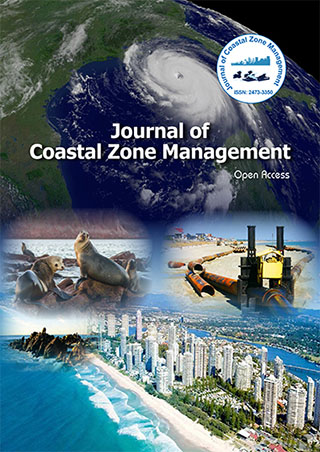Indexed In
- SafetyLit
- RefSeek
- Hamdard University
- EBSCO A-Z
- OCLC- WorldCat
- Publons
Useful Links
Share This Page
Journal Flyer

Open Access Journals
- Agri and Aquaculture
- Biochemistry
- Bioinformatics & Systems Biology
- Business & Management
- Chemistry
- Clinical Sciences
- Engineering
- Food & Nutrition
- General Science
- Genetics & Molecular Biology
- Immunology & Microbiology
- Medical Sciences
- Neuroscience & Psychology
- Nursing & Health Care
- Pharmaceutical Sciences
Abundance and diversity of tintinnid ciliates within power plant discharge and marine protected areas in Masinloc-Oyon Bay
3rd International Conference on Coastal Zones and Oceanography
May 18-19, 2018 Singapore
Jane Abigail M Santiago and Ma Carmen Lagman
De La Salle University, Philippines
Posters & Accepted Abstracts: J Coast Zone Manag
Abstract:
Tintinnids are one of the ubiquitous microzooplankton in marine waters and are recognized as indicator species of water quality. This study is a survey of the composition, diversity and abundance of tintinnids along 8 stations in Masinloc-Oyon Bay (MOB). Tintinnids were collected through plankton net with 20 μm mesh size on July 2017. Temperature, salinity, pH, DO and TDS of the water were measured using YSI 6600 meter. The nine identified tintinnid species in this study are first records for MOB. The warm water species Helicostomella longa dominated the tintinnid assemblage. Diversity range of 0-1.9 H’ indicates that MOB is moderately to heavily polluted bay. Anthropogenic activities and industrialization such as mining, port construction, oil spills, power plant thermal discharge and fish cages might affect the species diversity index of the bay. Multivariate analysis created a cluster of the stations (2-5) within Marine Protected Ares (MPAs) and a separate cluster of the stations (1, 6-7) far from MPAs. The station within the power plant’s outfall had the lowest abundance and diversity. Higher diversity indices were recorded at the station within MPAs. The results can support the notion that MPAs are promoting resilience in MOB. The tintinnid variation in this current work showed the uniqueness and diversity of MOB’s marine environment. The present study is the first bay wide assessment of Masinloc-Oyon Bay using biological and environmental parameters. janeabigailsantiago20@gmail.com
